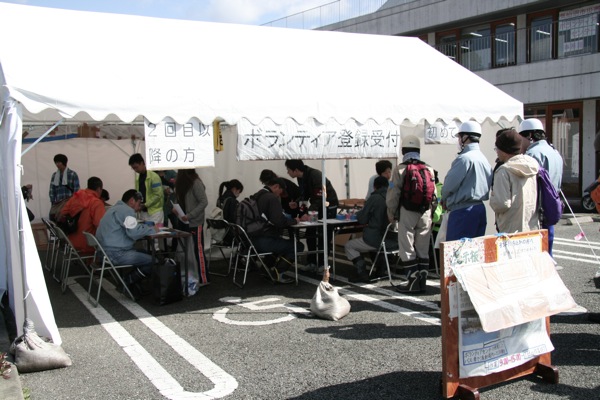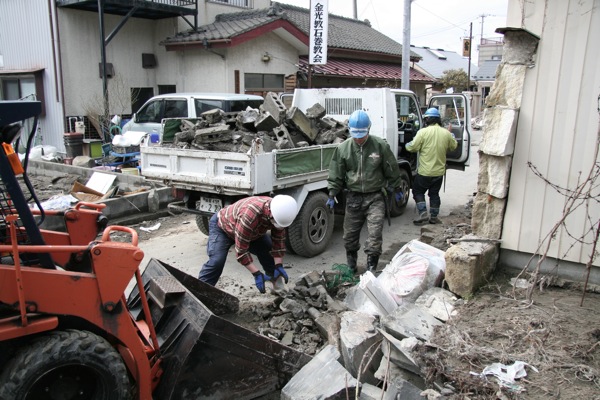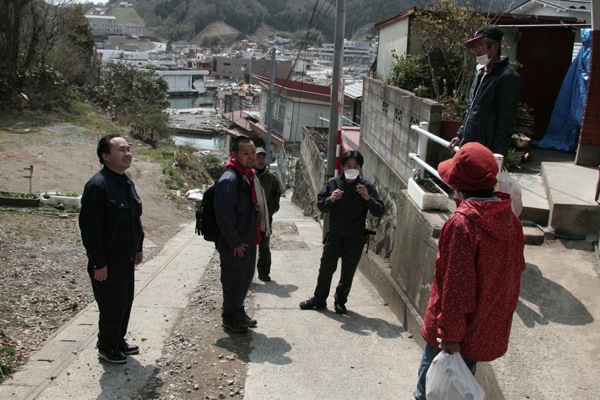Face to Faith No.70
2011 KCNA Conference in Santa Barbara, CA
 This year’s KCNA conference was hosted by the Los Angeles Church and was held at the University of California, Santa Barbara. The theme for the conference this year was Toritsugi Mediation: what is it, why we do it and how we do it. 続きを読む
This year’s KCNA conference was hosted by the Los Angeles Church and was held at the University of California, Santa Barbara. The theme for the conference this year was Toritsugi Mediation: what is it, why we do it and how we do it. 続きを読む
Congratulations to Wakaba!!
In Brazil there is a group named “Wakaba”, which means “young leaves” in Japanese. They perform Japanese drums and the Japanese dance Yosakoi Soran.
The group was formed in 2002 by Reverend Katsuyuki Kajiwara, Head Minister of the Konko Church of Critiba to nurture young people.
On July 31, the 8th Japanese Drum Championship was held in Brazil and “Wakaba” became the champions!! Also on the same day, the 9th Yosakoi Soran contest was held and “Wakaba” won third prize!!
Please check the videos of “Wakaba” winning! Enjoy Japanese drumming and dance!!
Japanese Drum
http://www.youtube.com/watch?v=XWZdWxTzPF0
Yosakoi Soran
http://www.youtube.com/watch?v=a-KITNpFz6w&feature=channel_video_title
Face to Faith No.69
Activities of the Konkokyo Tokyo Metropolitan Supporting Organization for Volunteers of Disaster
Building bridges and working in Cooperation with the Community

The Konkokyo Tokyo Metropolitan Supporting Organization for Volunteers of Disaster is providing aid to support reconstruction activities in Kesennuma City, Miyagi Prefecture. This institution was formed by the Konkokyo Tokyo Metropolitan Forum, Konkokyo Tokyo Center and the Konko Churches Association of Tokyo. Since the beginning of the project, the institution has sent six expeditions with forty participants since the end of May.
The volunteers chiefly worked to remove sludge and rubble as requested by Kesennuma Volunteer Center whilst a lady participant, Ms. Keiko Ikeda, gave sufferers massage treatments at the “Murasaki Kaikan” evacuation center which is supported by the Konko church of Kesennuma and the Murasaki Shrine.
One of the participants, Mr. Hisashi Nyuda took part as a volunteer for the first time. When the Great Hanshin Earthquake occurred; he wanted to join in with the volunteer work, but he was unable to. He said that this time he felt Kami-Sama gave him a push to participate in the volunteer effort. He was worried about the limitation of his physical strength due to being sixty-five years old. But after contact with sufferers, he felt inspired by their energy to live and strength to rely on Kami-Sama. His participation in the volunteer effort allowed him to experience a different level of faith which was greater than his own knowledge and personal thoughts.
Activities of Konkokyo Youth Association Expedition
Focusing on the Restoration of the Affected Community
 The Konkokyo Youth Association Headquarters have been taking on relief activity roles in Ishinomaki City, Miyagi Prefecture. The Youth Association has sent four expeditions, and seventy people have joined the relief activities as of the end of May.
The Konkokyo Youth Association Headquarters have been taking on relief activity roles in Ishinomaki City, Miyagi Prefecture. The Youth Association has sent four expeditions, and seventy people have joined the relief activities as of the end of May.
Reverend Naofumi Inoue, Head Minister of the Konko Church of Ishinomaki and nineteen advance party members visited Ishinomaki City Hall amongst other institutions to make courtesy calls and to request a place for their camp. But, although the Youth Association had contacted the Ishinomaki City government numerous times in advance, the office was already overwhelmed with responding to other matters and problems.
Their negotiations seemed to be very difficult because the city was pressed by various issues, but fortunately a contact within the office knew the former head minister of Ishinomaki Church. From then on their negotiations went smoothly and the camp site was provided.
Reverend Inoue said, “What a miraculous thing that we could meet a person who knows our Faith in Ishinomaki, even though Konkokyo is minority religion around here! It is no doubt that Kami-Sama and Reverend Kimi Muto, our former head minister led us.”
The expedition members and Reverend Inoue held a discussion and decided to provide aid for reconstruction work in the Sumiyoshi area where the Ishinomaki Church was located. The very next day they started work on clearing and removing rubble.
These activities are ongoing to help the reconstruction of this area in an aim to please the people of the affected community as Reverend Inoue strongly wishes to do.
The Konkokyo Osaka Disaster Relief Team is distributing aid supplies to isolated settlements.
The Konkokyo Osaka Disaster Relief Team is supported by Konkokyo Osaka Center and voluntary members. The Team has so far sent 4-6 member rescue parties on five missions.
The main purpose of this activity is to distribute aid supplies to isolated settlements in Miyagi and Iwate Prefectures. There was little damage to a house on the hill where the tsunami did not reach, even though in the same area low-lying settlements suffered crushing damage by a tsunami either. The inhabitants of hill villages have managed to stay in their houses whilst other residents have to live as a victims in refuge centres. The lifeline to the hill residents has not yet been restored, and they are isolated and increasingly lonely while they cannot reach support. The activities of the team are to locate these villages, deliver supplies and listen to the resident’s stories.
Rev. Kazuma Wada, who participated in the party, said, “I could not imagine the pain of the victims, even though I saw it on TV. After all I may not understand it unless I come to the field and meet these victims in person. Our activity is extremely small, but I still felt it was an important activity that reaches areas where large volunteer parties cannot.”
Praying for the victims and recovery of the affected area
On April 29th, 50 days after the Great East Japan Earthquake, The Religious NGO Network for Humanitarian Support (RNN) held the Great East Japan Earthquake Memorial Service at the Shintozan, Headquarters of Kurozumikyo in Okayama, Japan.
RNN is a consortium of several religious volunteer groups located in Okayama prefecture. Representatives of a number of faiths including Konkokyo, Shingon Buddhism, Catholicism, Tendai Buddhism and Kurozumikyo joined the service.
Around one hundred people gathered and prayed for over 25,000 victims of the earthquake and for the recovery of the affected area. During the service, each religious group performed rituals according to their traditions. Rev. Haruo Takebe, President of Konkokyo Peace Activity Center (KPAC), and Rev. Takeshi Sugimoto, Executive Director of KPAC, conducted a Konkokyo ceremony.
At the same time, in Ishinomaki City, Miyagi prefecture, (one of the most severely affected areas), Rev. Naofumi Inoue, Head Minister of Konkokyo Ishinomaki Church, held a memorial service at the Kashimamiko Shrine with several reverends from other denominations present. Rev. Shinsaku Nanao, Director of the Konkokyo Tohoku Administrative Center also attended the service.
People from the disaster affected area and Okayama united their hearts as one to offer prayers.
Konkokyo Cabinet Member Visits Churches in Disaster Affected Areas
Reverend Shoichi Izumi, a cabinet member of Konkokyo, paid a mid-April condolence and research visit to churches in areas affected by the East Japan Earthquake.
First, Reverend Izumi visited Konko Church of Ichinoseki, Iwate Prefecture. During the April 7th afterquake, the church’s gate pole fell off, but fortunately, the church building did not suffer other major damages. Reverend Kazuko Wakamatsu, Head Minister of the church, was reported as carrying on her missionary work in good shape.
When Reverend Izumi visited Kesennuma Church, Reverend Shiro Okuhara, Head Minister, was absent because he was conducting a crematory service for a member who died in the earthquake. His wife, Reverend Mikiko Okuhara said, “ In spite of the fact that many people have been buried without cremation, we are grateful that the member could be cremated with this service.” Kesennuma City was critically damaged by the earthquake, but the church escaped major damage because it is located on a hill. The church offered its facilities, such as the worship hall and annex, for the affected people and volunteers.
On April 14, after visiting churches of Sendai and Sendai-nambu, Reverend Izumi arrived at the Ishinomaki Church. He expressed his impression of that scene on arrival, “When I got out the car, it smelled pretty acrid like the combined smells of decay and ocean. It was indescribable.” Slime brought by the tsunami had accumulated around, and dried. Particles from the dried slime scattered in the air along with dust from the rubble. The worship hall of Ishinomaki Church was inundated by the tsunami and was covered with mud. At present, most of the mud has been removed. However, the smell still remains in the building which had been soaked with sea water and mud.
There was a concern for hygienic problems and worry that an epidemic might spread as temperatures rose.
Reverend Inoue said, “I would like to build a worship hall, even a temporary one so that the members can pray in a clean place and get recharged.” His wife, Reverend Naomi Inoue said, “I am worried that children may become ill if there is an epidemic.”
Completing his visits, Reverend Isumi said, “Seeing the reality, I became speechless. In order for reconstruction of the areas to occur, they need manpower more and more as well as the comfort of mitama and prayer. I wish that the Konkokyo congregation will work together for this reconstruction. To promote the support activities, it is important for headquarters to seek ways to establish a system of human and financial support.”




